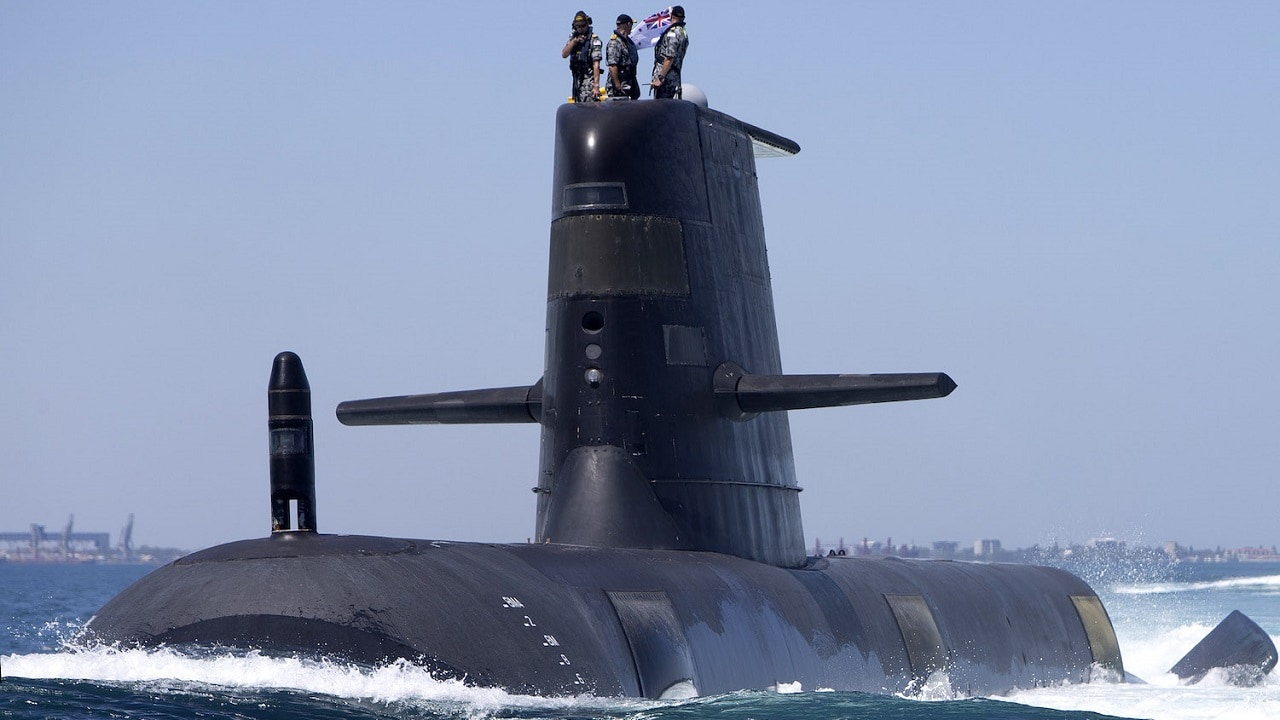Last year’s AUKUS pact between Australia, the United Kingdom, and the United States which, among other things, was formed to allow Australia a means to secure state-of-the-art nuclear submarines for its navy, stirred up quite a diplomatic hornet’s nest by excluding France from the deal.
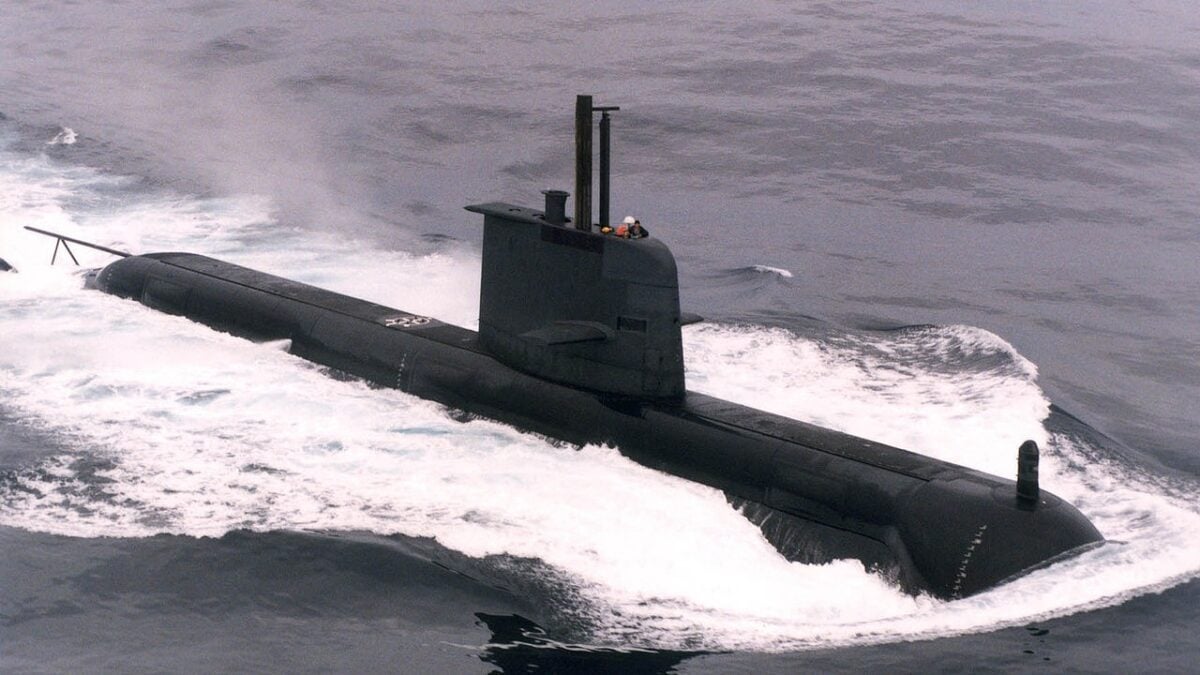
Collins-Class
That diplomatic fallout notwithstanding, this is as good a time as any to examine the current state of the Royal Australian Navy’s submarine force; after all, we at 19FortyFive have recently published articles on the submarines of the other three members of “The Quad” –namely the U.S, Japan, and India – so in the interest of “equal time” or being “fair & balanced” or whatever catchphrase you prefer, it’s time to give the current Aussie submarine force its moment in the sun, considering the growing naval threat possed by China.
Australian Submarine Force Organizational Structure
The modern Royal Australian Navy (RAN) Submarine Service was established in 1964, although actually it can trace its roots back to 1914, starting with the British-built E-class boats HMAS AE1 and AE2. The latter boat remains the only Australian sub ever to fire shots in anger, unsuccessfully engaging a Turkish gunboat in support of the Dardanelles Campaign in April 2015.
The present-day Submarine Service has an authorized manpower strength of 500 sailors and six Collins-class boats. These six boats, along with the Force Element Group Headquarters, are located at HMAS Sterling on Garden Island near Perth in Western Australia. Meanwhile, the LR5 submersible, which provides the RAN submarine rescue capability is situated at nearby Henderson in the City of Cockburn.
Training for prospective members of the RAN Submarine Service is structured and rigorous. Commissioned officers start off with the 22-week New Entry Officer Course
Royal Australian Naval College, Jervis Bay, New South Wales, whilst enlisted sailors get their feet wet – both literally and figuratively – at the 11-week boot camp at RAN Recruit School, HMAS Cerberus, Western Port Bay, Victoria. From there, officers and ratings alike attend the 3-day Submarine Selection Course at HMAS Stirling, followed by the 4-week Initial Collins Class Course and 5-day Escape Training Course – also at Stirling – and then additional sub-specific job training ranging from three weeks for a Communication and Information Systems Submariner role to up to five months for an Electronics Technician Submariner role.
The Collins Class Boats
The Collins class as a whole received its sobriquet in honor of Vice Admiral Sir John Augustine Collins (1899 – 1989), who saw service in two World Wars and was First Naval Member and Chief of Naval Staff during the Korean War, was made a Companion of the Order of the Bath (CB) for commanding the cruiser HMAS Sydney in a successful engagement against two Italian cruisers in July 1940, and subsequent to his retirement from the RAN served as Australian High Commissioner to New Zealand. o
As far as the individual submarine monikers go, the RAN official website states that “The names of the Collins class submarines commemorate the memory of six members of the Royal Australian Navy who served their country with distinction.”
Besides the HMAS Collins (SSG-73, commissioned in 1996), they are: HMAS Dechaineux (SSG-66), commissioned in 2001 and named for Captain Emile Frank Verlaine Dechaineux; HMAS Farncomb (SSG-74), commissioned in 1998, in honor of Rear Admiral Harold Bruce Farncomb; HMAS Rankin (SSG-78), commissioned in 2003 in tribute to Lieutenant Commander Robert William Rankin (presumably not related to Axis-appeasing U.S. Congresswoman Jeannette Rankin); HMAS Waller (SSG-75), commissioned in 1999, honoring Captain Hector MacDonald Laws Waller; and last but not least, HMAS Sheean, (SSG-77), commissioned in 2001, commemorating Ordinary Seaman Edward Sheean VC, the only enlisted sailor to make this prestigious list. These were the first submarines to actually be built in Australia.
The Collins-class warships are diesel-electric submarines and, according to the Submarine Institute of Australia, “ the second largest non-nuclear powered submarines in the world” as well as “one of the first submarines to be totally designed by computers.”
Salient features of these ships include high-performance hull form, highly automated controls, low indiscretion rates, high shock resistance and an efficient weapons handling and discharge system.
They boast a submerged displacement of 3,407 tons, a hull length of feet, beam width of 26 feet, and a draught of 23 feet at the waterline.
The Jeumont-Schneider DC main propulsion motor powers the vessel through the seas at a surface speed of 10 knots (12 mph) and a submerged speed of 20 knots (23 mph). Test depth is 590 feet whilst the actual hull crush depth is classified.
The crew complement consists of 58 officers and enlisted seamen. Armament consists of six 21-inch torpedo tubes, with a capacity of 22 torpedoes, or a deadly smorgasbord of Mark 48 Mod 7 Common Broadband Advanced Sonar System (CBASS) heavyweight torpedoes, UGM-84C Sub-Harpoon anti-ship missiles, and Stonefish Mark III mines.
LR5 Submersible
In case of a extreme duress situation that the Collins crewmembers are unable to resolve themselves, the crew of the LR5 stands ready to come to the rescue. The LR5 is a 21.5-ton vehicle with a hull length of 31 feet, a speed of 3 knots, and a maximum operating depth of 500 meters (1,640 feet). It has a three-person crew — the pilot, a co-pilot and the systems operator – and a capacity for evacuating up to 16 submarine survivors at a time to a mother ship or mother submarine; it could make up to eight trips to a stricken submarine (a rescue capability of 120 personnel) before needing to recharge the battery power supply.
Collins Problems
While the Collins Class was a bold play on Australia’s part, the subs have had some serious problems:
Despite the capabilities of the RAN’s Collins-class, the submarines had been the subject of many incidents and technical problems since the design phase. That has included accusations of foul play and bias during the design selection, improper handling of design changes during construction, major capability deficiencies in the first submarines, as well as ongoing technical problems throughout the early life of the class.
These problems were further compounded by the inability of the RAN to retain sufficient personnel to operate the submarines –by 2008, only three could be manned, and between 2009 and 2012, on average two or fewer were fully operational.
Ready to Take On China?
Initial speculation has it that the new AUKUS submarine role would be filled by either American-made Virginia-class or British Astute-class warships. Meanwhile, the Collins-class boats have had their service life extended and are therefore not expected to begin retiring until 2038.
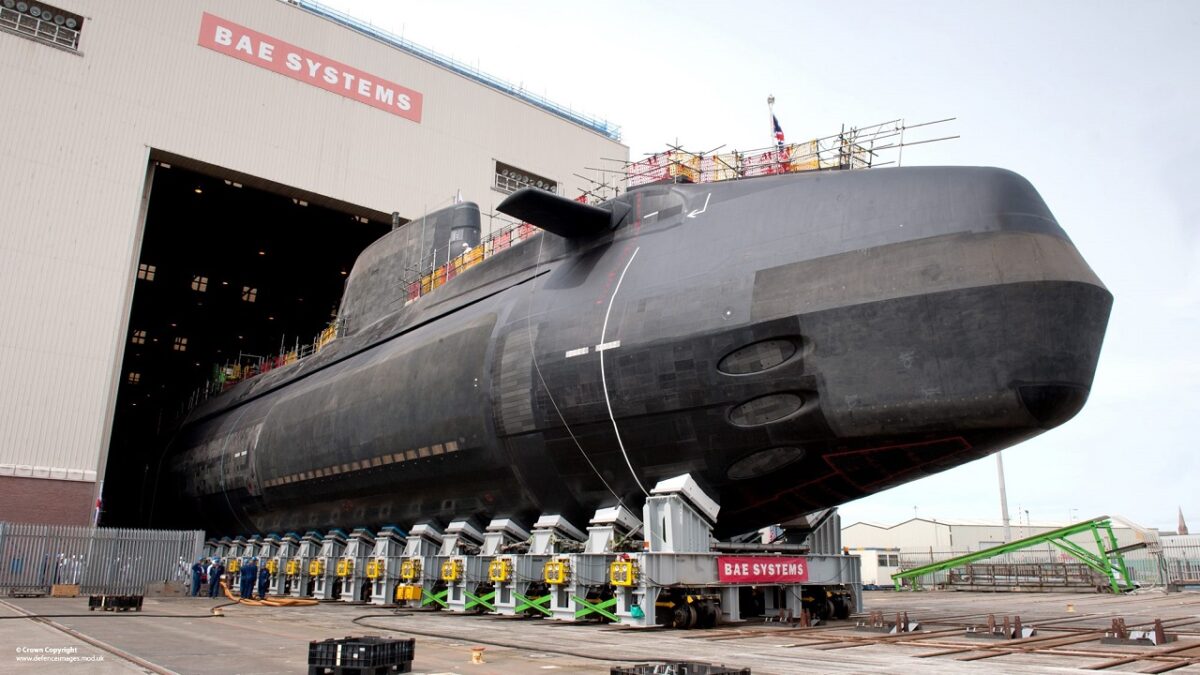
Royal Navy Astute-Class Submarine.
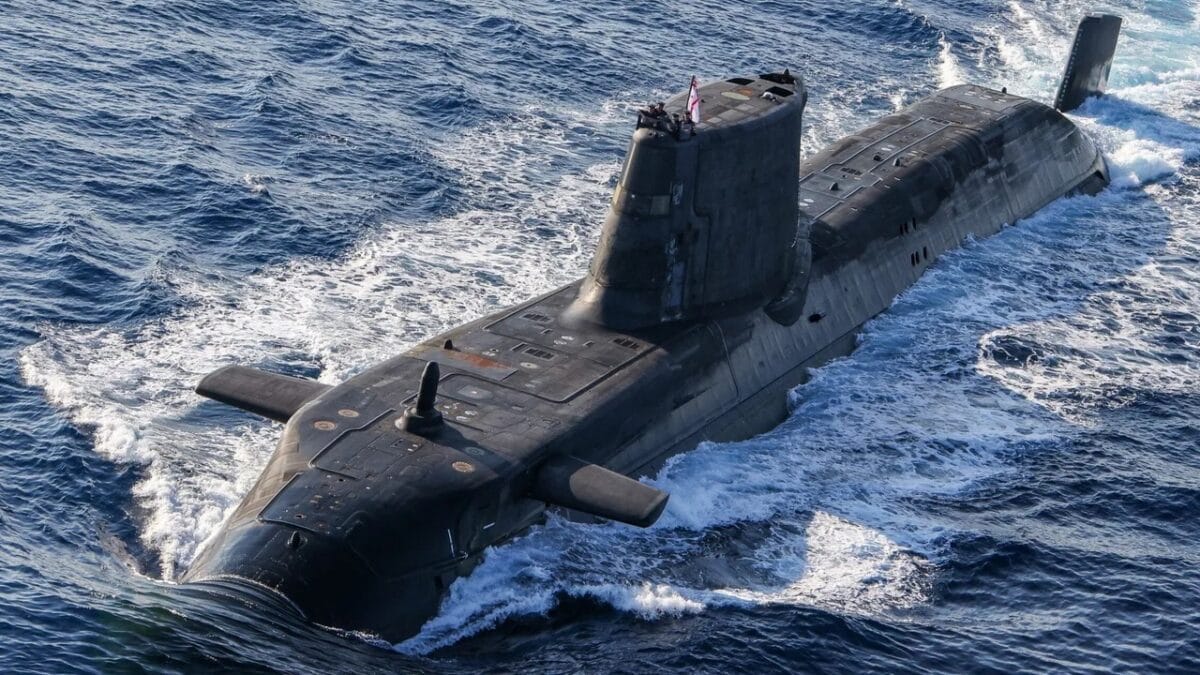
Astute-Class Submarine. Image Credit: Royal Navy.
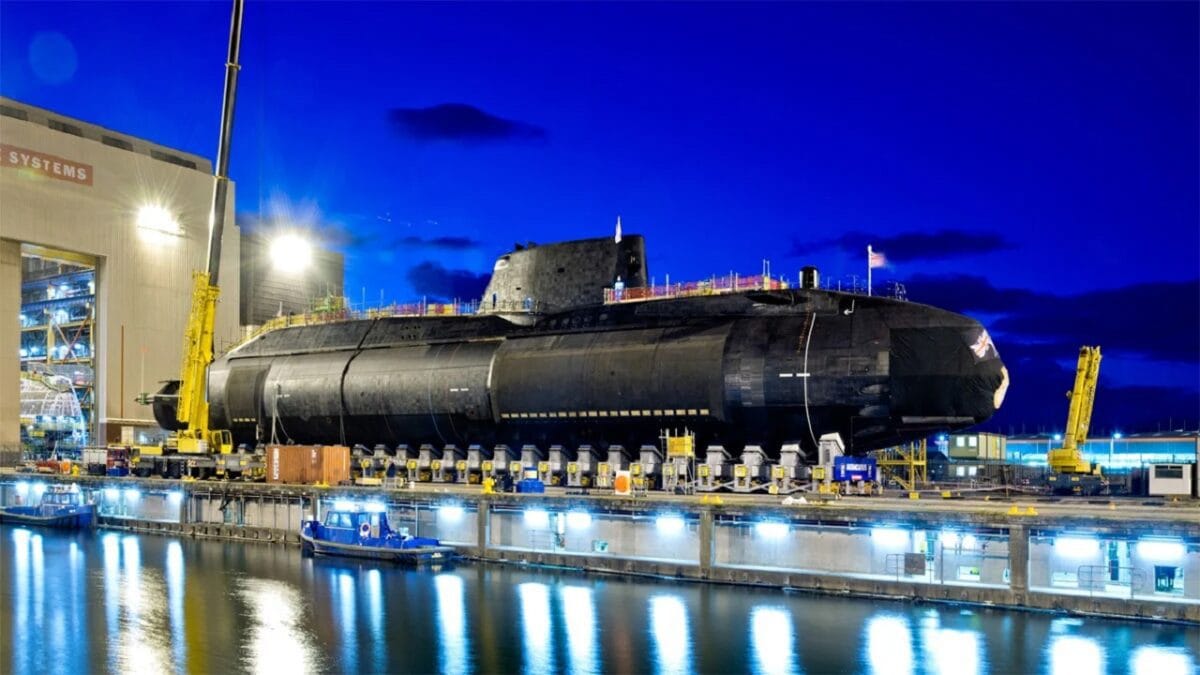
Astute-class Submarine. Image Credit: BAE Systems.
Whilst the 6-ship RAN submarine fleet isn’t big enough to take on Red China singlehandedly, they still should make for a formidable deterrent when partnered with the submarine fleets of the other Quad allies.
Christian D. Orr is a former Air Force Security Forces officer, Federal law enforcement officer, and private military contractor (with assignments worked in Iraq, the United Arab Emirates, Kosovo, Japan, Germany, and the Pentagon). Chris holds a B.A. in International Relations from the University of Southern California (USC) and an M.A. in Intelligence Studies (concentration in Terrorism Studies) from American Military University (AMU). He has also been published in The Daily Torch and The Journal of Intelligence and Cyber Security. Last but not least, he is a Companion of the Order of the Naval Order of the United States (NOUS). In his spare time, he enjoys shooting, dining out, cigars, Irish and British pubs, travel, USC Trojans college football, and Washington DC professional sports.

